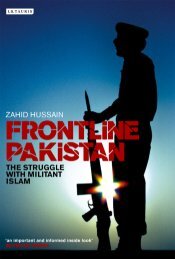Who Owns Pakistan - Yimg
Who Owns Pakistan - Yimg
Who Owns Pakistan - Yimg
You also want an ePaper? Increase the reach of your titles
YUMPU automatically turns print PDFs into web optimized ePapers that Google loves.
9 Karim 3<br />
10 Hasham 2<br />
11 Latif Jamal 2<br />
12 Ghani 2<br />
13 Adam 2<br />
14 Yunus Bros 1<br />
15 Haroon 1<br />
16 Jaffer 1<br />
17 Bengali 1<br />
18 H A Dada 1<br />
19 H A Dadabhoy 1<br />
20 Suleman Haji Omer 1<br />
21 Gatron 1<br />
The Rise of Chiniotis<br />
" We serve by setting up industries" Mian Habib Ullah<br />
Chiniot is a small town of 200,000 inhabitants, on the banks of River Chenab, in<br />
district Jhang in Southwestern Punjab famous for the trading skill of its people,<br />
popularly known as the ancestral homes in their native town, then Chiniot might<br />
have the biggest concentration of millionaires per square yard in the world.<br />
Ironically not every resident of Chiniot is entitled to call himself a Chinioti and this<br />
description is reserved for only those and their Descondants who migrated to far<br />
off Indian cities in the late 19th or early 20th century, to eke out a living for<br />
themselves. Those who stayed back, to live on agriculture, even today are not<br />
Chiniotis but Kazis and Syeds.<br />
Out of 100,000 people who proudly call themselves Chinioti, only 5,000 live in<br />
Chiniot and an estimated 2,000 of them are still living in Calcutta where they had<br />
the biggest concentration in the undivided India, with pockets at Kanpur and<br />
Madras. Compared to the Memons who had sailed to far off places, as early as<br />
18th century, the Chinioti's migration was limited to India and today they pride<br />
themselves in the fact that they have not shifted abroad.<br />
At the time of partition, Chiniotis were mostly rooted in leather, hides and skins<br />
trade and there was only one Chinioti group, Mohammad Ismaeel Maula Baksh<br />
group which had ventured and Haji Sheikh Maula Baksh who had set up their<br />
first ginning factory in 1889 and by 1946, when they split, the group comprised 14<br />
79













